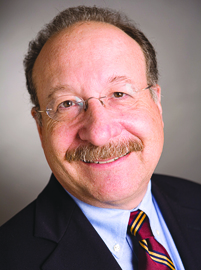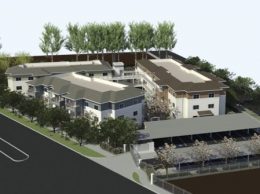Dubroff: Airline industry consolidation hampers tri-county airports
IN THIS ARTICLE
- Columns Topic
- Henry Dubroff Author
By Henry Dubroff Friday, October 16th, 2015
Pilots. Planes. Power.
These are the three P’s of modern aviation and they explain in large part why the Central Coast is likely to struggle to get improved air service, particularly for business travelers looking for more frequent flights to major destinations.
That’s not just me talking. In remarks in New York at a recent conference of business journalists, United Airlines Vice Chairman Jim Compton talked frankly about the “pressure on smaller cities” as regional service gets cut back.
That’s not great news for Santa Maria and San Luis Obispo, which have been stymied so far in seeking new flights. For Santa Barbara, it may mean more weak numbers as the city grapples with the cost of its four-year-old terminal. For Oxnard, which has a small federal grant to try to bring back scheduled service, the odds are long. United basically dominates the region via its United Express flights on Skywest.
The best alternative might just be to get in the car. Compton said that United is determined to “keep capacity in line with demand.” It’s a not-too-subtle recognition that if you need to get to a meeting in Detroit or Chicago and you live in Santa Maria or Ventura, the only option might be to hop in the car and head to the dreaded LAX, or try to find a cheap alternative flight on Southwest from Burbank.
“Cities have catchment areas,” said Compton. “More people are driving.”
Behind the recent flight cutbacks is a shortage of pilots, as new FAA rules have created a bit of a domino effect. First, the retirement age was reduced from 65 to 60 — forcing a wave of departures from major airlines just as a large group of baby boomers were hitting the retirement level.
Replacing them were scores of pilots flying regional jets, who scored a once-in-a-lifetime chance to fly the next generation of Boeings and Airbuses. At about the same time, the FAA dramatically increased the number of hours required for private pilots to gain commercial licenses, reducing the pool of eligible candidates to replace the flight crews who left for mainline carriers.
Compton said it could be years before the supply and demand balance gets restored, at least as far as regional jet pilots are concerned.
When it comes to planes, United’s contract carriers have little alternative but to make due with 50-seat regional jets that are cramped and uncomfortable — and fly less frequently than the 33-seat prop jets they replaced.
Over time, our markets could be served by somewhat larger planes, offering more seats and possibly more comfort. But those deliveries are just beginning.
Which brings us to power. The consolidation that’s taken place in the airline industry has brought together USAir and American, Delta and Northwest and Continental-United, vastly reducing opportunities for smaller cities to attract new carriers.
For Santa Barbara, it has meant the loss of competition from Frontier on the Denver flight and consolidation of USAir-American flights to a single destination, Phoenix. Oxnard saw its United and USAir flights end during the recession. San Luis Obispo once had competition on the LAX route but American now flies to Phoenix, leaving LA to United Express.
Until there are larger planes, attracted by growth in business fliers or perhaps a consolidated marketing effort, we seem to be stuck with the status quo.
Low fuel prices and new fees — Compton said United collects $3.5 billion in fees a year — are making the airline business profitable but there’s not a lot of relief in sight for smaller markets in an era of airline consolidation.
• Reach Editor Henry Dubroff at [email protected].













